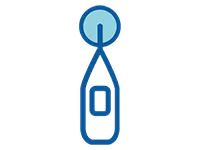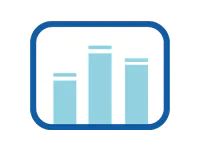
Sound measurement is defined as the process of making measurements of sound pressure levels using sound measuring devices. Examples of sound measurement quantities are:
There are a few different ways to measure sound. Depending on the methodology, sound pressure measurements are taken with an integrating sound level meter or a personal sound exposure meter. Sound level meters can be used in all types of measurements, whereas personal sound exposure meters are typically used to prevent noise-induced hearing loss and are located near the human ear.

The sound pressure level SPL is a sound quantity expressed in decibels dB that expresses the changes in the air pressure that produce sounds. Changes in the air pressure are detected by the membranes of measurement microphones, essential parts of sound level meters. The units of air pressure are pascals and the smallest change of atmospheric pressure that humans can detect is a change of 20 uPa (micro pascals) and the highest change can go up to thousands of pascals. To manage such a big range of variability of air pressure the decibel scale is used (dB). The sound decibel is a logarithm scale that uses a reference of 20 uPa and compresses a large scale of pascals to a manageable scale of decibels. Because of the decibel scale, the sound measurement results are referred to as sound pressure levels.
A decibel scale is a representation of sound measurements relative to a reference pressure. Typically, a decibel scale starts from 0 dB at the threshold of hearing (20 uPa) to 130 dB (around 100 Pa) at the threshold of pain up to 140 dB at the threshold of hearing damage (decibel scale download PDF)
Because of the decibel scale, the sound measurement results are referred to as sound pressure levels SPL. The decibel scale is more useful than the pascal scale because it is more similar to how humans perceive loudness. This is because the human ear reacts to a logarithmic change in level, which is what the decibel scale measures.
A sound is a form of energy that travels through the air in a way that causes air particles to move back and forth as the energy moves forward. The pressure variations produced when a sound wave propagates through the air are very small compared with the static atmospheric pressure. Changes in the air pressure are detected by the membranes of measurement microphones, essential parts of sound level meters.
The Equivalent Continuous Sound Level (Leq) is the most commonly used sound quantity because it has a direct relationship to the energy content of the signal. The Leq is a form of representation of the energy of the sound signal and is used to assess the level of danger to human hearing.
In the case of occupational noise, the LEQ is measured in 8 hours of a working day and such result is referred to as the daily noise exposure level (LEX). The daily noise exposure levels measured can be also presented as the % of the daily limit, and such representation of the result is called a noise dose.

Sound level meter
Sound Level Meter is an electronic device equipped with a microphone that detects air pressure changes and converts them into an electrical signal. The electrical signal is then converted into a digital one so it can be displayed on a display or recorded in the meters memory.

Measurement range
The range of sound level meter is defined by the dynamics of its analogue/digital converter. Typical dynamics of A/D converter is 110 dB, therefore a typical measurement range in decibel scale starts from 20 dBA and goes up to 130 dBA. The 130 dBA is already a threshold of pain for a human ear.

Frequency analysis
Real sound signals are variable and combine numerous signals combined. Sound level meters use real-time frequency analysis in 1/1 or 1/3 octave bands in order to assess the contents of low and high frequencies in the signal. The output of such an analysis is called frequency spectrum and it represents noise in consecutive, frequency ranges called octaves or third octaves.